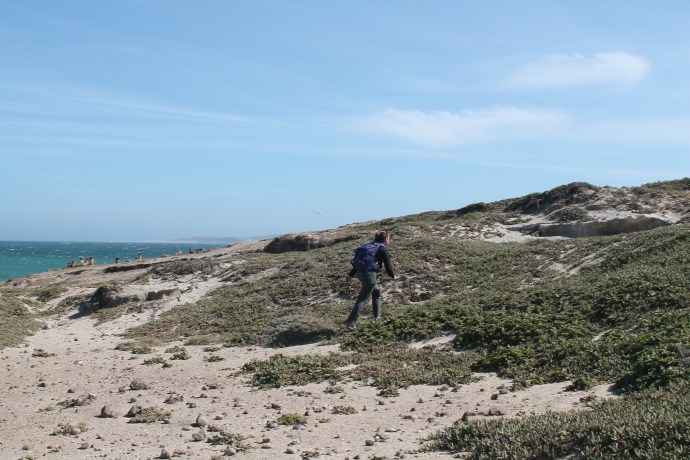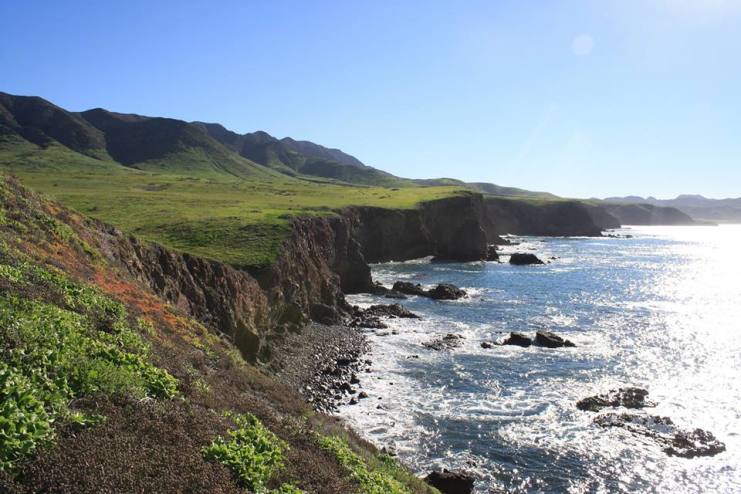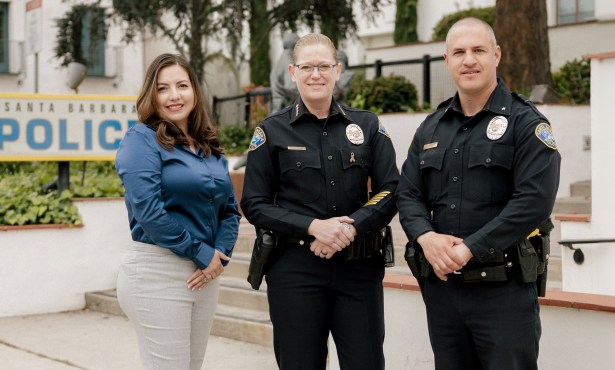Can Chumash Archaeology Save Fisheries?
How the Santa Barbara Channel’s Past Might Inform a Global Fishing Future

You can imagine the scene: visitors and residents alike, watching the sun set over the Santa Barbara coastline, as silhouettes of the Channel Islands float on the horizon, fishing boats bob in the foreground, and dolphins leap in the surf.
This could be straight from a modern American Riviera dream, yet people have been enjoying those exact views for much longer than that. Although the ocean and our climate is rapidly changing, Santa Barbara was just as nice to live here a millennium ago as it is now.
The consistent weather, incredible variety of flora and fauna, and access to both mountains and the coast made this region a practical paradise for indigenous Chumash people. With such rich terrestrial and marine resources, they were able to trade nomadic ways for a settled life in permanent villages on the islands and the mainland.
A critical component of that thriving Chumash way of life was managing fisheries, many of which have all but vanished in modern times. Swordfish and marlin were once frequent visitors to the Santa Barbara Channel — they’re not so much anymore — and numerous now-dwindling species of abalone and clams could be harvested all year long.
Fisheries are hurting even more drastically on the global stage, due directly to the soaring population of hungry humans since the late 1800s. (Climate change also plays a role in certain regions.) A recent report by the Food and Agriculture Organization of the United Nations said that more than 35 percent of the world’s fisheries are being harvested at unsustainable levels. Fishermen in the Southeast Pacific and Mediterranean are the worst offenders, with about two-thirds of their catch being beyond replaceable levels. But the American fishing industry is not immune: in 2022, for the first time ever, they canceled the snow crab season in Alaska.

With human appetite for seafood only on the rise, marine biologists everywhere are implementing all manner of strategies to protect and bolster fisheries. But as they use the latest technologies to save dwindling fish populations, there’s growing evidence that a wise way to plan for the future might be to look at the past. Though the concept is still emerging and fraught with unique challenges, many researchers are realizing that archeology could play a pivotal role in fishery management in the years to come.
“What starts out as a discussion about people’s diets in the past really becomes a story about California’s marine ecosystems,” explains Torben Rick, a UCSB graduate who frequently studies the Channel Islands and serves as curator of North American archaeology at the Smithsonian. “The people who collected that material are, in some ways, the biologists of the past.”
Researchers like Rick and Todd Braje, who is the chair of anthropology at San Diego State, often focus on middens, those large piles of broken shells and crumbling bones that are found all over the Chumash landscape. “Efforts might want to start there: places resistant to environmental change and heavy fishing, places that were points of hyper-abundance for tens of thousands of years,” said Braje, who has researched the geographic range of abalone eaten by the region’s pre-colonial populations.
His work is one of the first cases where archeology is informing modern management. “Dr. Braje’s work identifying places of abalone abundance in the past has proven to be invaluable to rehabilitation efforts on the Islands today,” said Rick.
But generally speaking, the archaeology-to-management connection is currently rare. “It’s still in limbo between academia and practical application,” said Rick.
Sign up for Indy Today to receive fresh news from Independent.com, in your inbox, every morning.
A primary impediment in merging archaeological evidence with current conservation data about specific species is that the two fields essentially speak different languages. “Modern and deep historical data is very different,” confirmed Braje. “There’s some translation that has to happen.”
Rick agreed. “You’re looking at that static archaeological record compared to a dynamic modern record,” he said. “You have to be more abstract in your comparisons, more accepting of uncertainty.”
Part of the difficulty is separate goals. Conservation may focus on a day-to-day management of a living species whereas archaeology might want to reconstruct ancient diets across a period of time. The data each scientist gathers requires further interpretation to reveal its relevance.
The use of archeology in conservation management can provide direct access for indigenous peoples to take part in both analyzing their past and planning for the future. But that connection is also still in the early stages.
“Archaeology right now is in a unique position with roles that indigenous populations are playing in the management of their own heritage,” explained Brian Holguin, a graduate student in archaeology at UCSB who is also a member of the Santa Ynez Band of Chumash Indians. “Now is a great time. Indigenous populations are gaining control of their heritage. The next step is to engage in the conversations about climate science and conservation. The Channel Islands are a great place because of such a unique environment.”

Rick believes that archeologists “have a duty to highlight the descendants of the materials we’re studying,” noting that such a relationship can link “environmental research and social justice.” He explained, “The Chumash should be playing a key role in all of these things. They should be key participants in any restoration. They should have a seat at the table in making decisions and thinking about management.”
That includes the ongoing discussion about bringing sea otters back in larger numbers to the Santa Barbara Channel, which fishermen fear would decimate already struggling shellfish species. The archeological record shows that the otters lived side-by-side with abalone and the like prior to European contact, although the Chumash occasionally hunted otters as well.
Combining archeology and indigenous knowledge also reminds conservationists that humans were a part of this landscape for a very long time. “People were in that ‘pristine’ environment for probably the last 20,000 years,” said Holguin, explaining that it is often forgotten how humans play a pivotal role in the development of ecosystems. Researchers, he elaborated, sometimes “remove themselves from the environment as a species.”
It can be hard for anyone, from veteran scientists to young students, to appreciate how information that dates back thousands of years might help humans understand the present. In an ever-changing world where it’s hard to keep pace with current events, Rick has heard people suggest that “adding an archaeological perspective might be unrealistic.”
Braje has heard that too — that we are “too globalized,” that there is “nothing to learn” from archeology — but calls it the easy argument. ““If we don’t consult the past, there is no road-map,” said Braje, pointing out the fault of using just the past century of data, long since globalized fisheries altered the environment. “Archaeology and deep history have to have a seat at the table.”
Support the Santa Barbara Independent through a long-term or a single contribution.




You must be logged in to post a comment.